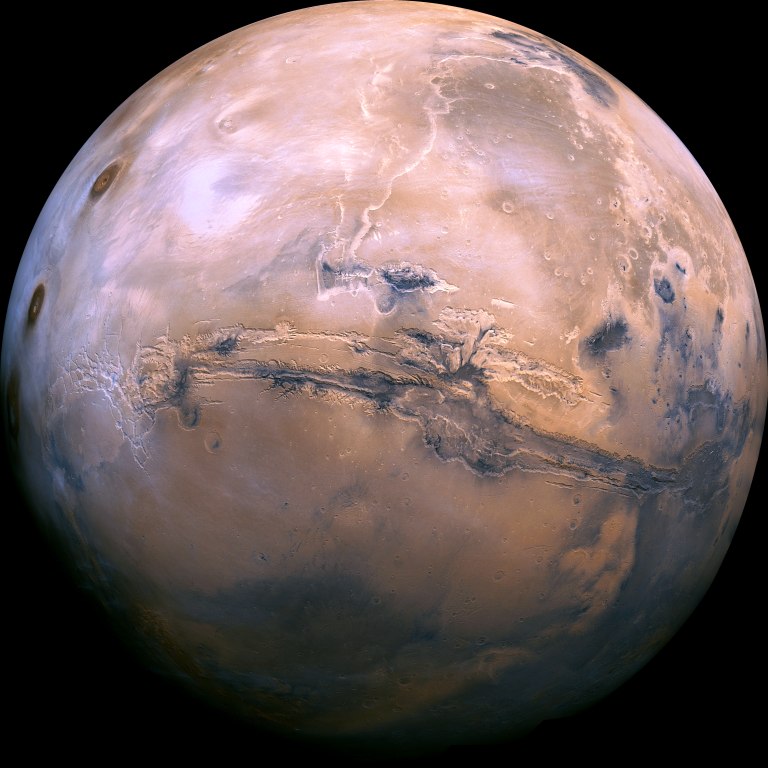Mars could once have had rings, and the red planet may regain them again, according to a new study.
A new model developed by scientists at Purdue University in the US suggests that debris that was pushed into space from an asteroid slamming into Mars around 4.3 billion years ago alternates between becoming a planetary ring and clumping together to form a moon.
According to one theory, Mars’ large North Polar Basin or Borealis Basin — which covers about 40 per cent of the planet in its northern hemisphere — was created by that impact, sending debris into space.
“That large impact would have blasted enough material off the surface of Mars to form a ring,” researcher Andrew Hesselbrock said.
As the ring formed, and the debris slowly moved away from the red planet and spread out, it began to clump and eventually formed a moon.
Over time, Mars’ gravitational pull would have pulled that moon towards the planet until it reached the Roche limit, the distance within which a planet’s tidal forces will break apart a celestial body that is held together only by gravity.
Phobos, one of Mars’ moons, is getting closer to the planet. According to the model, Phobos will break apart upon reaching the Roche limit, and become a set of rings in roughly 70 million years.
Depending on where the Roche limit is, Hesselbrock and David Minton believe this cycle may have repeated between three and seven times over billions of years.
Each time a moon broke apart and reformed from the resulting ring, its successor moon would be five times smaller than the last, according to the model, and debris would have rained down on the planet, possibly explaining enigmatic sedimentary deposits found near Mars’ equator.
“You could have had kilometre-thick piles of moon sediment raining down on Mars in the early parts of the planet’s history, and there are enigmatic sedimentary deposits on Mars with no explanation as to how they got there,” Mr. Minton said.
The findings were published in the journal Nature Geoscience.


















